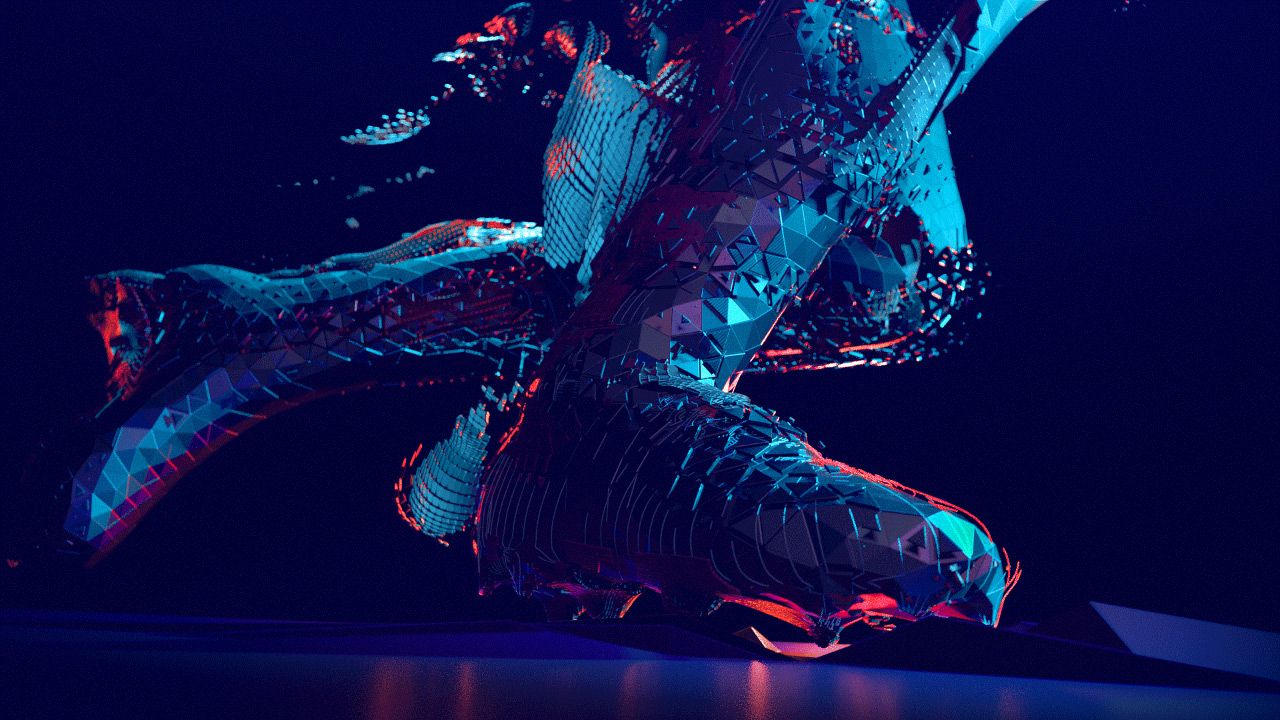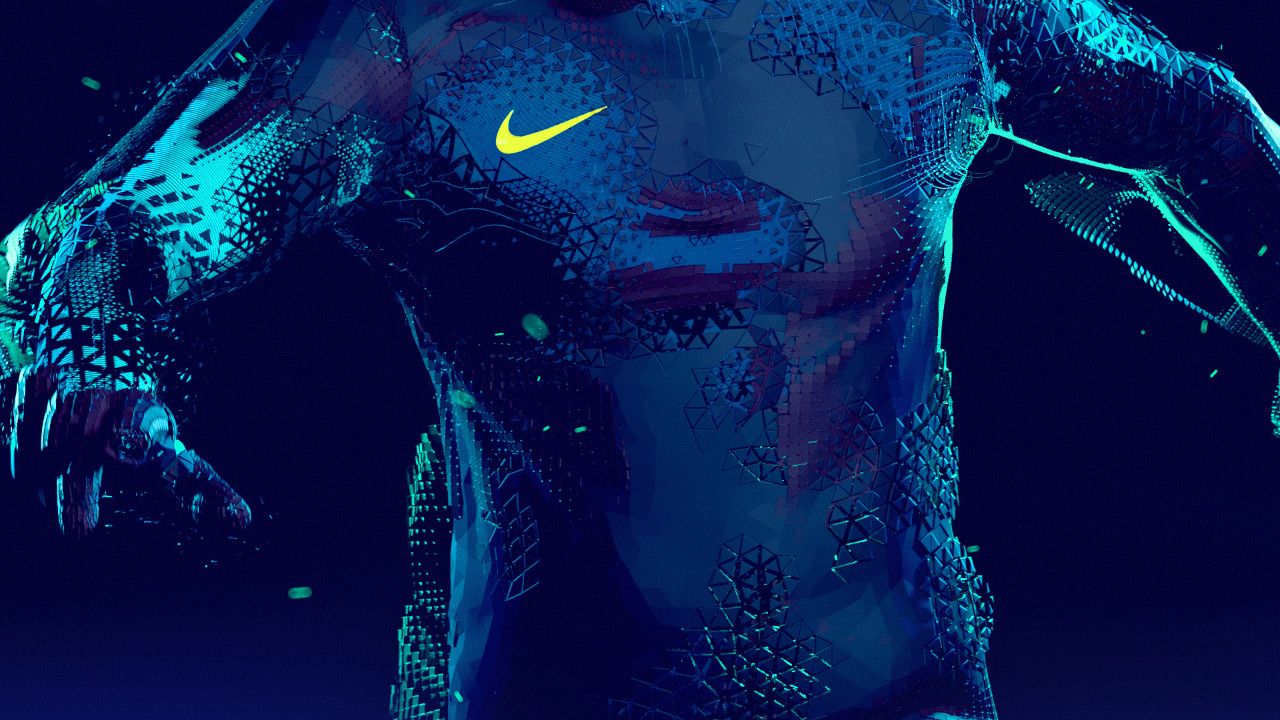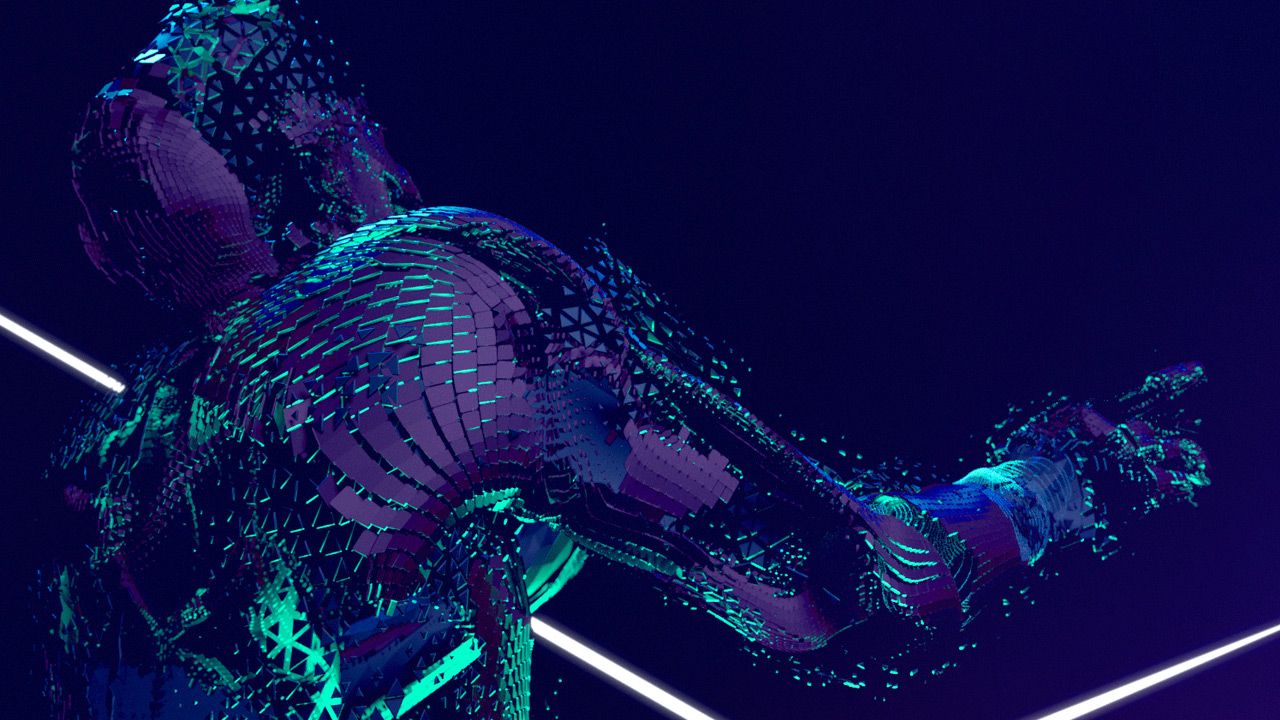
Unique 3D imagery manifests the power and precision of world-class athletes through short films. Recorded training data was the driving force behind the captivating visuals to reveal the true essence of the players.
Motivated to create a highly dramatic effect, rim and back lighting accentuate the players on darkened backgrounds. The collection is highlighted on each athlete resulting in high contrast stills and stirring moving images.
Designing for Future Technologies


Humanizing the digital – or giving technology a face
To give new technology a face means to cross borders of visual expression. As we seek to bridge the interaction between humans and technology, our approach towards design and technology is emotional. Based on extensive research and years of experience, we develop visual representations that establish proximity. To create visuals for sometimes more, sometimes less tangible technologies requires us to acknowledge the complexity and individuality of every single case. Interacting with an avatar differs a lot from communicating with a car, for example, and the design processes differ just as much. The goal is the same – to minimize barriers and to create intuitive connections.
— Interacting with an avatar differs a lot from communicating with a car, for example, and the design processes differ just as much. The goal is the same – to minimize barriers and to create intuitive connections.

While dealing with several projects aiming to humanize technical entities in the past, we have worked on the IBM Watson avatar, which is a vivid example. The task was to give an increasingly human-like technology an identity that is authentic and trustworthy. As an avatar lives through interaction, the design process was preceded by an intense research and exploration to anticipate possible scenarios. To realize the transformation between analog and digital, different sets of behaviours and how they would be represented in terms of movement, shapes or materiality were developed. Although the interaction with artificial intelligence is somewhat predefined, this is not supposed to be noticeable at any time in order to ensure authenticity and create trust. To explore how A.I. communicates with humans, we developed a system that is adaptable, context-aware and data-driven to run in real-time. We focused on how the avatar could respond to different data sources and inputs to perform in a variety of industry contexts. The creative design process was then based on the premise to make the representation as tangible as possible in its interactions, enabling an intuitive relationship with the humanized technology. In order to achieve intuitivity and accessibility, the definition of the visual identity for the digital assistant was the key to create consistency.
Illustration of future technology: Motion, shapes and colours bringing life to abstract systems
The fast evolving, innovative spirit of technology continuously creates new touchpoints and platforms that crave new forms of attention and although we are getting more and more used to it, the digital still depends on a visual representation that makes sense to the human eye. Especially when it comes to more complex and thus abstract technology such as quantum computers, nanobots or innovations around the IoT and the like, brands and corporations are challenged to present their advanced systems to the crowd and make their functions comprehensible. Even if such technologies are still in development and rather futuristic, the need for a formal language is inevitable – perhaps especially in the early stages – to create access and understanding. In contrast to an interface that needs to be designed for interaction, these representations for innovative systems are required to illustrate highly complex ideas to make them tangible and somewhat real in order to communicate about them. The way to find a suitable aesthetic expression in these cases is especially process-oriented. In depth-research in combination with practical knowledge and a close interdisciplinary collaboration are key to realizing projects that shape the face of future technology.
Developing visual languages to let technology speak
Besides making sense of technology, building a relationship with technology is more than just interacting with a computer. We are naturally handling our personal devices such as phones, tablets and laptops because they are designed with a strong focus on intuitivity. However, more and more technical elements in everyday life are rather public, evoking a need for a common way of understanding. Take, for example, the future of driving. The idea of autonomous driving has become very concrete by now and we will probably see concepts on how to integrate such technologies to a city infrastructure in no time. Not only do the drivers need to learn how to handle the future car, but also, other road users, like pedestrians or cyclists need to be sensitized to such innovations. What feature does a car need to communicate with its environment when it is a vehicle and a driver at the same time?
— Besides making sense of technology, building a relationship with technology is more than just interacting with a computer.
credits
Client: Nike Global Football
Nike Design Director: Nick Parkinson
Nike Art Director: David Chen
Creative Direction: Cedric Kiefer
Design/Animation: R. Schmidt, D. Öztürk, R. Gambacciani, D. Weidemann
Compositing: Fran Sanchez de Cañete
Production: Lars Wagner, Ian Otto
Sound: Jens Fischer
3D Scanning: Mimic Productions
